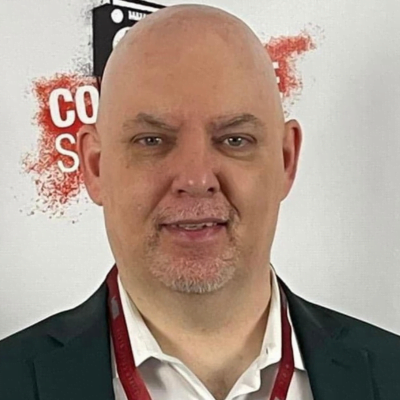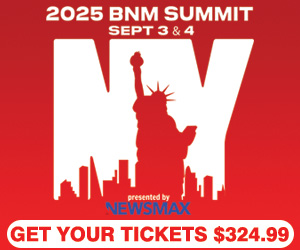In 2013, Arbitron conducted a study on radio listening which showed that over 92% of American’s over the age of twelve listen to the radio each week. Over 10,000 stations were tested as part of this project, with 1274 of them being listed as sports talk operators.
What really stood out on a positive note in the research was how the format itself was responsible for delivering the best educated and the highest income earning listeners among the top 22 formats. Given that we’re all in business to make money, this is certainly not a bad thing. Where it is however an issue is when it comes to the perception of your audience among the people in your building.
“Humans see what they want to see”
― Rick Riordan, The Lightning Thief
In most cases, sales folks are treated to some advanced information and the good ones use it to their benefit when dealing with local advertisers and national agencies.
That said, even the work horses in your building who are fighting each day to generate revenue don’t have a visual perception of who the target audience is because most of the time they’re creating presentations, making phone calls to secure dollars or dealing with their sales manager and a pain in the ass Program Director who they’re convinced is only in the building to make their lives more difficult.
Sellers are typically working off of data and selling points from managers, not the feedback that comes from your audience through social media, text lines, callers and on-site appearances. They don’t see, hear and experience your audience as often as those on the programming end do but then again, that isn’t necessarily a bad thing and here’s why.
If you venture down to the programming end, you get a completely opposite picture painted for who your listeners are. While sellers may see data which shows a smarter and more sophisticated listener, in the mind of most hosts, producers and programmers, your listener is sitting in his basement, playing fantasy football, has a low paying job and he listens to your station for 8-10 hours a day.
Ok maybe that sounds brash and isn’t a reflection of how every programming person thinks but trust me, many do see it that way and it’s not accurate.
Let’s face it, today you can see people and who they are and what they do via their Twitter and Facebook profiles so instantly a perception is created in the mind of the personality once they receive some form of feedback. Secondly, if the studio receives ten texts from the same phone number during the course of a talk show then the immediate thinking is “he can’t have much of a life or a job if he’s bugging us this much“.
The need of a talk show host (and those who work on a program) is to feel that the audience is invested in the content that’s been created so when real people provide some type of engagement to the show, it confirms that the path that’s been taken is the right one for the show. That validation courtesy of a response provides fuel to keep moving the show forward except we often lose sight that those who we see, hear and connect with are not the majority of the audience who are consuming our product.
In various markets the numbers are different so feel free to adjust accordingly with where you’re based but in most cases, 85-95% of the audience DOES NOT call into the radio station. With social media exploding the way it has over the past 10 years I expect the numbers for engagement are up but even if they blossomed to 25% of people talking back to the radio station, that would still mean that 75% of your audience doesn’t speak to you.
We operate in a world where instant validation of our opinion is necessary for our own ego so it’s hard to fathom that 3/4 of the listening audience wouldn’t think to connect with us. Yet they do and that’s where the misconception lies. People who listen to you buy tickets to support your local teams, they buy products they’ve heard about during commercial breaks on your radio station and they have conversations each day with their friends, family and co-workers about things you talked about – they’re just not telling you about it.
Think about it for a minute. How could the sports talk radio format be measured and come back with results that show it to deliver the best educated and highest earning listeners if the sample of evidence was the irrational caller in your market who calls up each week to suggest trading three reserves for Mike Trout or that one lunatic on social media who’s only mission in life is to tell you how every hour of every day how bad you are?
The reason why the intelligence and income levels are higher are because the lawyer who’s listening for 45 minutes while on his way into the office isn’t telling you he does. Neither is the Fed Ex driver who considers you his companion while making deliveries throughout your region. Nor is the local police officers who are driving around listening while trying to keep your streets safe. And it’s certainly not going to be conveyed to you from the high ranking executives in your backyard, including the power players inside of your local professional sports teams.
In all of the professions above (and there are many more), the consumer is focused simply on listening and enjoying the experience, not feeling obligated to participate. Sure it’s a great feeling when we form a connection with a listener because it means our content presentation moved them enough to want to respond but not hearing from them doesn’t mean they don’t exist and aren’t engaged in what we do.
Think about yourself for a second. Most of you have some type of TV show you watch on a regular basis and when it’s over you discuss it with your family, friends or co-workers or you post about it on a social page for your followers to respond to. How many times though did you call, email, tweet or facebook a response to NBC, FOX, ESPN, ABC, etc?
Heck, the Super Bowl is the most watched sporting event of the year and the next day every single radio and TV outlet spends considerable time discussing which commercials worked and which one’s didn’t however we don’t go to work that next day and tell ourselves that we better alert Budweiser, Go Daddy or Geico of what we thought of their new creative campaigns.
Once again, consumption, awareness, mental connection and emotional investment in the product may exist even if the public communication does not.
The reality in this line of work is that you will always be relevant to many more people then you ever thought possible so don’t make the mistake of assuming that the reflection of your audience is what you see and hear through public reaction.
Most people will not consume every segment of your show and in most cases they’re not even listening to you every day. When they put on their radio, they’re hoping to mentally escape into your content and be entertained. As Billy Joel once sang in the hit song “Piano Man”, “He knows it’s me they’ve been coming to see to forget about life for a while“.
In a nutshell, that’s our job at the end of the day. We’re the voice on the radio that’s supposed to take people through a mixture of emotions on their journey to and from work. Whether it’s joy, anger, comfort, confusion or something else is to be decided upon by each individual. We become a part of their world and the only bad part is that we may never know it. Then again judging by our own perceptions, maybe that’s not so bad!
Lesson:
- Identify the age of your target listener in your key demographic
- Use your data to better understand what type of income level they’re at
- Make a list of things that appeal to most men in this age/income bracket
- Position your content/imaging/engagement strategy in line with your target listener
- Give this listener a face & name & put it on display in your office/studio for all to see

Jason Barrett is the Founder and CEO of Barrett Media. The company launched in September 2015 and has provided consulting services to America’s top audio and video brands, while simultaneously covering the media industry at BarrettMedia.com, becoming a daily destination for media professionals. Prior to Barrett Media, Jason built and programmed 95.7 The Game in San Francisco, and 101 ESPN in St. Louis. He was also the first sports programmer for SportsTalk 950 in Philadelphia, which later became 97.5 The Fanatic. Barrett also led 590 The Fan KFNS in St. Louis, and ESPN 1340/1390 in Poughkeepsie, NY, and worked on-air and behind the scenes at 101.5 WPDH, WTBQ 1110AM, and WPYX 106.5. He also spent two years at ESPN Radio in Bristol, CT producing ‘The Dan Patrick Show’ and ‘GameNight’. JB can be reached on Twitter @SportsRadioPD or by email at Jason@BarrettMedia.com.



